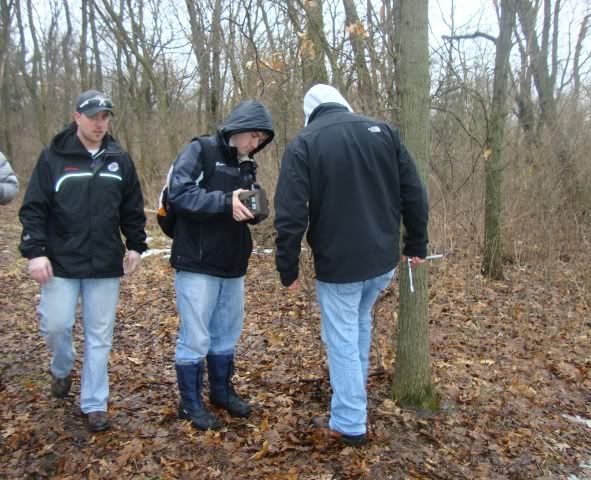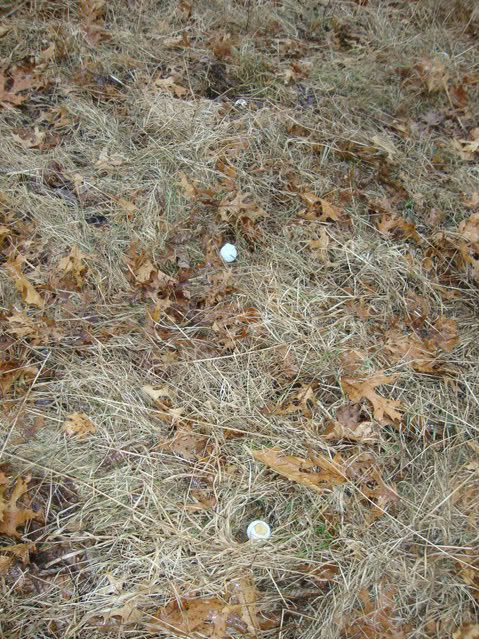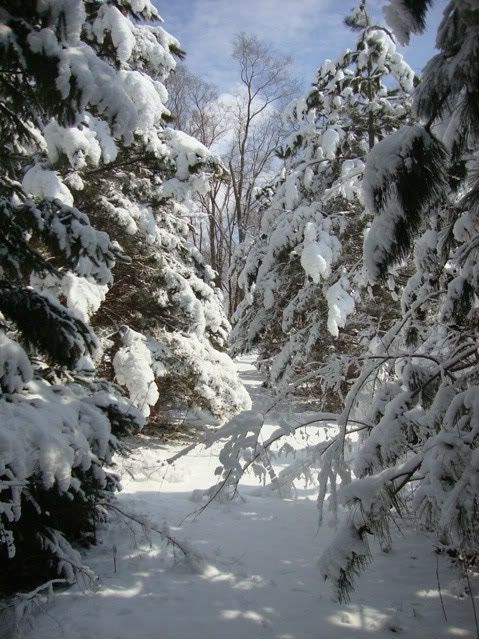I'm taking you all back in time a bit. The subject of this post is based around a long-term exercise that started in Week 6 of our lab this semester. Although we started this assessment back in February....student analyses of the results were not due until near the end of the semester. The semester has since ended, and the early results are in.
The goal of lab was to set up an experiment involving camera traps to test the responses of certain species to various urines, and perhaps getting an idea of how territorial they are.
The focus was our local canines: the Coyote (Canis latrans) and the Red Fox (Vulpes vulpes).
______________________________________________________________________
First, finding a location for each set-up is key. The strongest smelling urine in the world wont work, if you (a) don't have critters on-site to respond and (b) don't pick a good location. Despite what manufacturers of commercial trapper lures promote, a scent lure will rarely draw critters in from miles away. It can, however, be used to coax a critter that's already in the vacinity into standing in front of your camera.
Photo by J. Scherer
All cameras were programed to record video clips. Much easier to see response of individuals in video clips than in still photos.
Eventually, it came to application of the experimental treatments.
The set-up during lab went relatively well, and I was feeling good about our possibilities......which is always dangerous.
But, my good feelings were soon to be dashed because two days after we set the project up, it looked like this outside.
________________________________________________________________________
Below are some of the highlights.
- the scent egg on the left contains a cottonball soaked in Coyote Urine,
- the egg in the center contains a cottonball soaked in Deionized Water (Control)
- the egg on the right contains a cottonball soaked in Fox Urine.
Also, remember that the wooden "scent eggs" holding the urine are not always visible (covered in grass, etc.) but they are within the camera's field-of-view.
We started data collection on this project in late February.
We started data collection on this project in late February.
March 2nd
March 2nd (same deer)
March 15
March 17
March 24
March 28th
March 29
April 3rd
March 2nd
April 5th (love the moon in the background)
March 9
March 12
March 17
March 25
March 25
March 30
April 9
EVEN obvious prey of Coyotes and Red Fox seemed oblivious sometimes (also....I hate to be the bearer of bad news for you who put Coyote/Fox urine around your garden to scare away bunnies...but.....)
But the canids were the target......
Here are our best videos of canines responding. We assumed the coyote in the second video was over the 'yote urine. We got two others clips of canines, but neither were showing an obvious response to the scents.
April 2nd
April 8
- Feb. 29
- March 6
- March 17
- March 18
- March 20
- March 21
- March 22
- March 24
- March 25
- March 26
- March 27
- April 2
I did have the students conduct statistical analyses on the data. However, we had almost no response from Canines, so I had them combine the response of all wildlife to each urine and compare their combined response to fox vs. 'yote urine. Basically, there was no difference detected. However, this could be due to short survey period (only 6 weeks) and small camera sample size (n=4). By just watching the critters in the videos, it really seems as if they were more often lingering on the fox urine.....but the stats don't back this up.
I have become interested enough in our findings so far that I'm continuing these experiments indefinately and rotating camera locations periodically.
...stay tuned!










My god, I love camera trapping. I think this entry is fascinating, and I can't wait to REALLY look at it. It's been a busy couple of weeks...but I've got a long day of travel tomorrow that will give me time to catch up! Thanks for sharing.
ReplyDeleteWhich cameras were you using and are they 840nm or 940nm IR
ReplyDeleteHi Ron...
DeleteOne of these cams was a ltl. Acorn. It was the 940.
The other three were Bushnell Trophy Cams (2010).
Had to mix and match based on the cameras I had available to me!